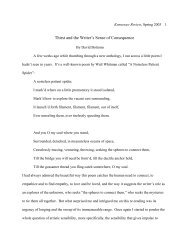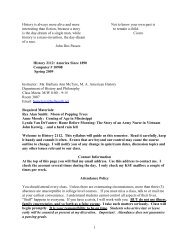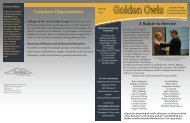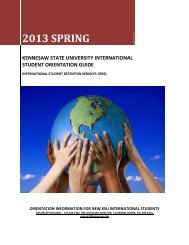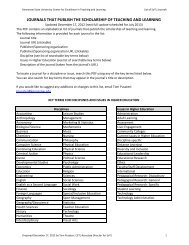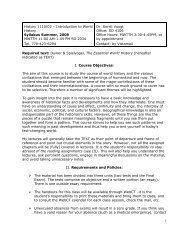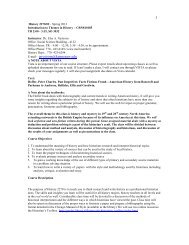Food, Gender and Cultural Hegemony - Kennesaw State University
Food, Gender and Cultural Hegemony - Kennesaw State University
Food, Gender and Cultural Hegemony - Kennesaw State University
Create successful ePaper yourself
Turn your PDF publications into a flip-book with our unique Google optimized e-Paper software.
Cualli 130<br />
examination of food ways in all cultures reveals much about power relations, the<br />
shaping of community <strong>and</strong> personality, the construction of the family, systems of<br />
meaning <strong>and</strong> communication, <strong>and</strong> conceptions of sex, sexuality <strong>and</strong> gender. The study<br />
of food ways has contributed to the underst<strong>and</strong>ing of personhood across cultures <strong>and</strong><br />
historical periods,” (Counihan 1513).<br />
When considering this question of food ways in the context of the conquest, it<br />
is obvious that much in the preferences <strong>and</strong> taboos in both the European culture <strong>and</strong><br />
that of American indigenous cultures make no practical sense in terms of food. The<br />
primary food preferences of the Spanish <strong>and</strong> Portuguese <strong>and</strong> the indigenous<br />
Americans were most significantly tied to religion. In each case the primary food<br />
consumed by elites <strong>and</strong> the popular classes was sacralized: seen as being of sacred<br />
origin <strong>and</strong> importance. This was true for wheat <strong>and</strong> it was true for corn.<br />
The importance of corn to many of the food systems of the precontact New<br />
World is not news. Initially, however, anthropologists saw corn <strong>and</strong> the beginning of<br />
agriculture as related <strong>and</strong> therefore that the worship of corn had a material basis.<br />
However, anthropologists now argue that corn was for hundreds of years a minor crop<br />
before it rose to dietary, cultural <strong>and</strong> religious prominence. In addition, Christine<br />
Hastorf <strong>and</strong> Sissel Johannessen argue that maize (corn) was “an agent in the<br />
transformation of social <strong>and</strong> cultural identity” of these cultural systems (Hastorf <strong>and</strong><br />
Johannessen 427-443). They argue that maize has had extraordinary cultural<br />
significance wherever it is grown, <strong>and</strong> that much of this significance is because it is a<br />
domesticated plant that does not exist in the wild <strong>and</strong> has not since about 3500 BC<br />
(Long-Solis <strong>and</strong> Vargas 4). Corn cannot exist without the continued cultivation of<br />
man <strong>and</strong> therefore is essentially “human.” They also argue that it was not the most<br />
economically advantageous or productive crop, <strong>and</strong> in some cases was quite<br />
precarious.<br />
Corn figured <strong>and</strong> figures prominently in the cosmology of many Native<br />
American groups <strong>and</strong> every detail about the way in which corn is planted, harvested<br />
<strong>and</strong> treated in cultural life was determined by ritual (Johannessen & Hastorf 396;<br />
Bohrer 469-499; Sahagun). The versatility of corn was significant to its cultural<br />
importance. Corn was used as a drink, porridge, <strong>and</strong> the most important ingredient in<br />
[Type text]



